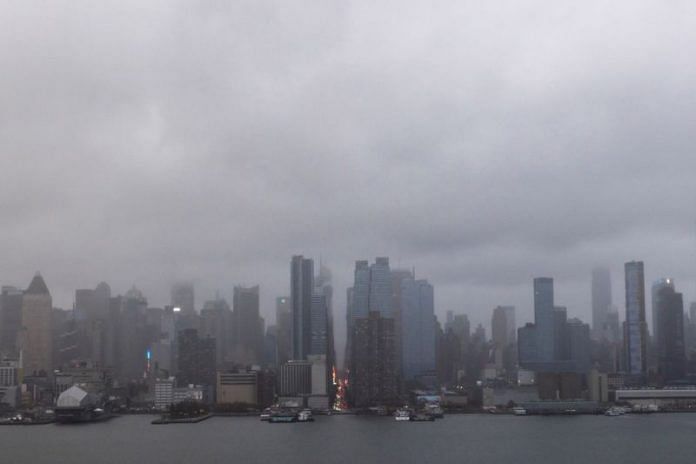
By Rich McKay and Daniel Trotta (Reuters) -The northwestern U.S. avoided getting hit by a second “bomb cycle” on Thursday when the storm’s fury came up short of forecasts, but an ongoing “atmospheric river” deluged northern California with wind and rain.
The first bomb cyclone, in which rapidly dropping pressure produces hurricane-force winds and precipitation, pounded the region on Monday and Tuesday, killing two people and knocking out power to hundreds of thousands of people from Washington state to northern California. Images of cars and houses crushed by fallen trees in Washington filled social media. A second bomb cyclone had been forecast to hit Thursday, but the storm’s pressure failed to drop fast enough over a 24-hour period to earn the provocative designation, said Joe Wegman, a meteorologist with the National Weather Service’s Weather Prediction Center.

Even so, the low-pressure system produced more wind and rain. Northern California continued to be drenched by an atmospheric river on Thursday, creating hazards on roads and flood and wind alerts. Wind gusts of 65 mph (105 kph) were expected on Thursday evening, and risks of life-threatening flooding, and mud and rock slides remained throughout the region, the weather service warned.
About 272,000 homes and businesses remained without power in Washington and Northern California on Thursday night, down from 600,000 on Wednesday. The windstorm and heavy rain also damaged the power system in Canada’s Pacific coast province of British Columbia and cut power to some 225,000 customers on Tuesday night, according to provincial electricity provider BC Hydro. That was down to about 20,000 by Thursday evening.
The storm did bring much-needed rain as much of northern California has been experiencing abnormally dry conditions, according to the U.S. Drought Monitor.
“It’s never ideal to have so much rain in such a short period of time, but it certainly helps to fill the reservoirs and moisten the soil,” Wegman said. About 11 inches (280 mm) of rain had fallen on Wednesday and overnight into Thursday in northern California, bringing several feet of snow in higher elevations, said Rich Otto, a forecaster with the Weather Prediction Center. The storm was likely to bring another 5 to 10 inches of rain (130 to 250 mm), Otto said.
(Reporting by Rich McKay in Atlanta and Daniel Trotta in Carlsbad, California; Editing by Alison Williams and Leslie Adler) Disclaimer: This report is auto generated from the Reuters news service. ThePrint holds no responsibilty for its content. var ytflag = 0;var myListener = function() {document.
removeEventListener('mousemove', myListener, false);lazyloadmyframes();};document.addEventListener('mousemove', myListener, false);window.addEventListener('scroll', function() {if (ytflag == 0) {lazyloadmyframes();ytflag = 1;}});function lazyloadmyframes() {var ytv = document.
getElementsByClassName("klazyiframe");for (var i = 0; i < ytv.length; i++) {ytv[i].src = ytv[i].
getAttribute('data-src');}} Save my name, email, and website in this browser for the next time I comment. Δ document.getElementById( "ak_js_1" ).
setAttribute( "value", ( new Date() ).getTime() );.














